A very special 1987 Hobbit 50th Anniversary Publicity Kit
24 Feb, 2024
(edited)
2024-2-24 5:51:29 PM UTC
2024-2-24 5:51:29 PM UTC
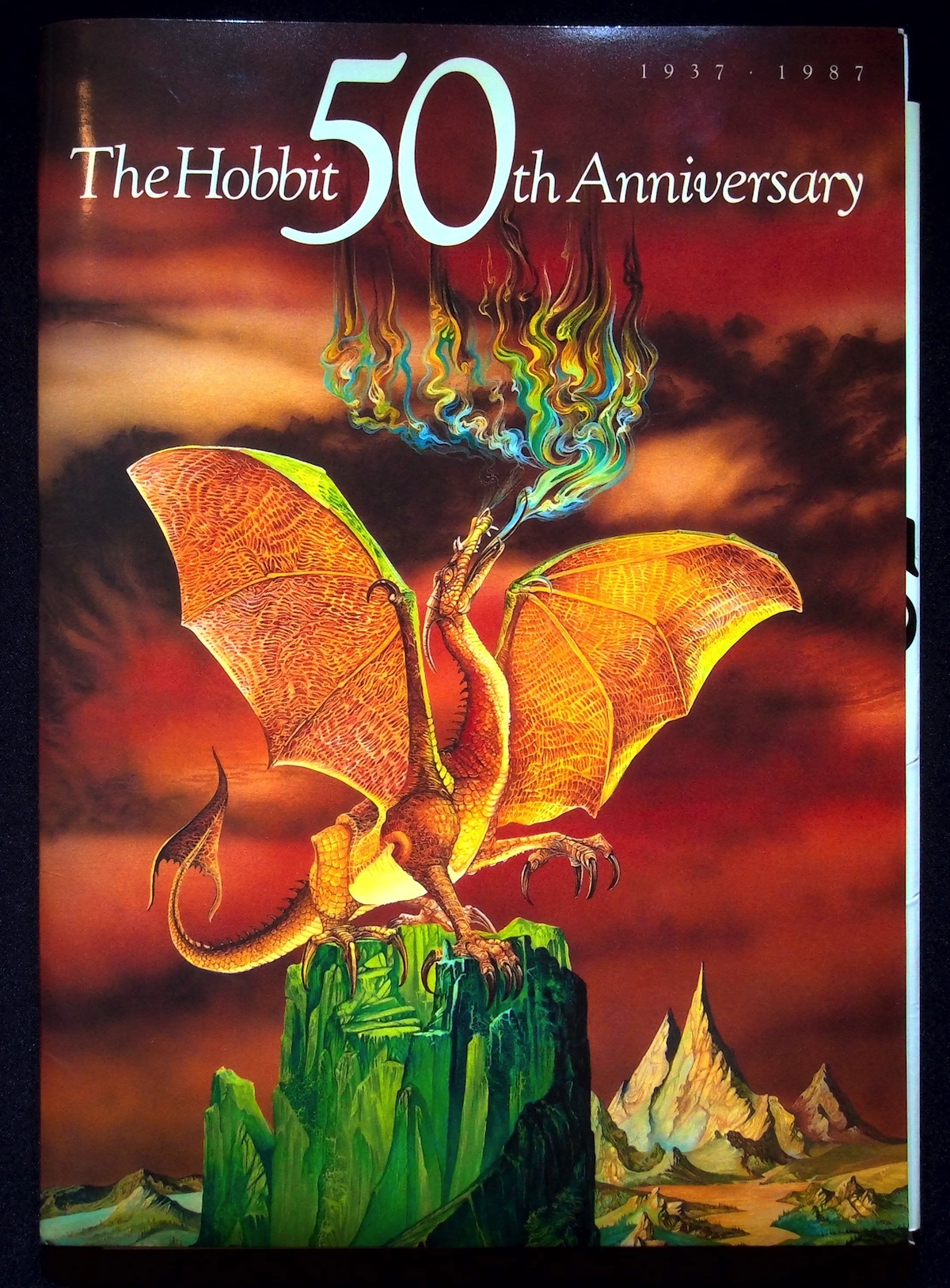
The cover of the publicity kit with Roger Garland artwork featured
In 1986, Tolkien's publisher Unwin Hyman began to circulate their plans for the 50th anniversary of the publication of The Hobbit - a full year of events, contests, and new editions of The Hobbit and other Tolkien books to celebrate the anniversary. Part of their effort to publicize what was coming was a packet of material to be shared with press and booksellers. This publicity kit generally came with a copy of a letter from Rayner Unwin, publicity documentation, book cover art, a poster, and a booklet written by Brian Alderson. It is impossible to tell after more than thirty years if these sets ever were uniform in their contents, as items may have been removed by fans or collectors, and additional items may occasionally have been inserted at a later date for any number of reasons.
A week ago, a bookseller listing was brought to my attention (again). It had been mentioned on the TolkienGuide forums a year ago at a very high price (to my mind), and evidently not garnered any interest as the seller dropped the price by a third last week. That was enough for me to click through and read the listing, and I noticed something I hadn't before. The seller mentions, at the end of a list of typical contents for a kit such as this, that it contained "photocopied letters between Tolkien and his publishers." That caught my eye - I hadn't ever heard that anyone's publicity kit contained such items, though the Alderson booklet has a reproduced letter in it, and the packet contains a photocopied letter from Rayner (Tolkien's publisher), so it seemed possible that was all the seller had. My gut told me something more might be hiding in this folder, so I took a leap of faith and ordered the set. A few days later, it arrived - quite impressively packed, so I must give a huge hat tip to the bookseller Vandello Books for such an excellent job.
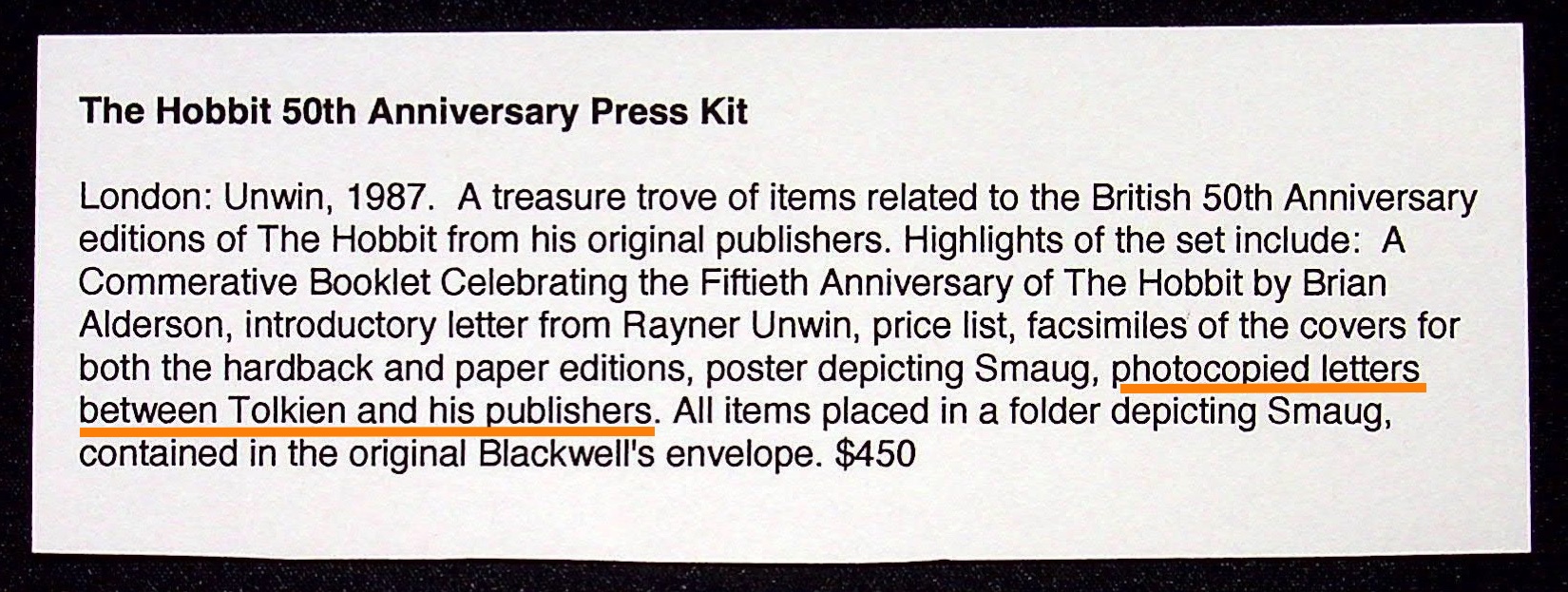
Vandello Books original catalog listing from 2023
The folder was rather thick. The artwork and publisher's flyers were all in absolutely fine condition, appearing to have never been taken out, so I was already happy with my purchase.
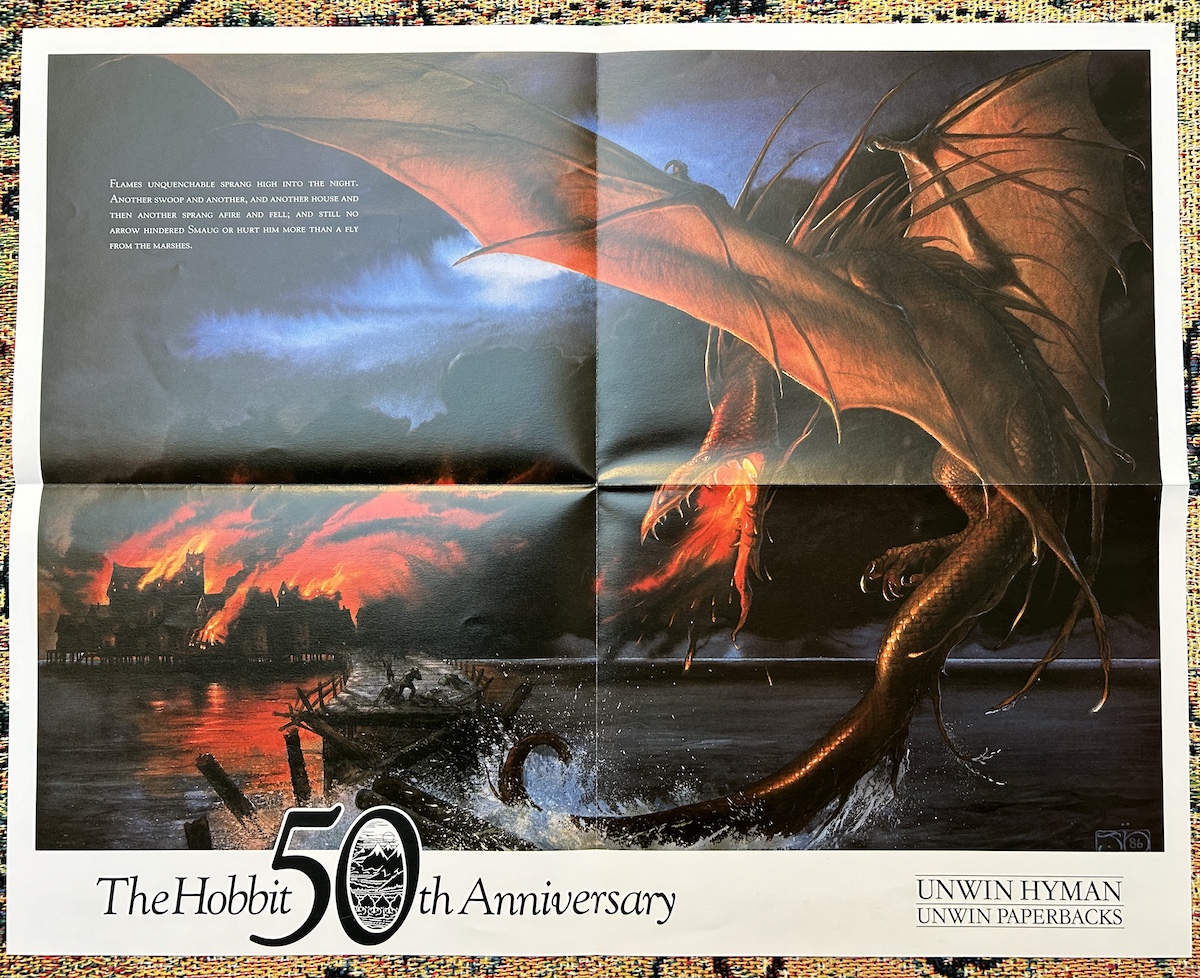
John Howe poster sample
At the back of the packet, though was the absolute treasure hoard that I was hoping for. In photocopy form, there are fourteen complete letters written by J.R.R. Tolkien from 1937-1938, four complete letters from Stanley Unwin written to Tolkien in this same time period, and the letter from the German publisher who wanted to translate The Hobbit if Tolkien would only sign a statement saying he was of Aryan descent. The Tolkien letters have all been published by Carpenter, but after reading through them, I have found that most (70%) of the photocopied originals have differences from their Carpenter versions, some quite significant. Of course none of the Stanley Unwin letters are in Carpenter, nor is the German letter, though those have been documented in summary form in Scull and Hammond's excellent Chronology - seeing those in complete form was relevatory as well.
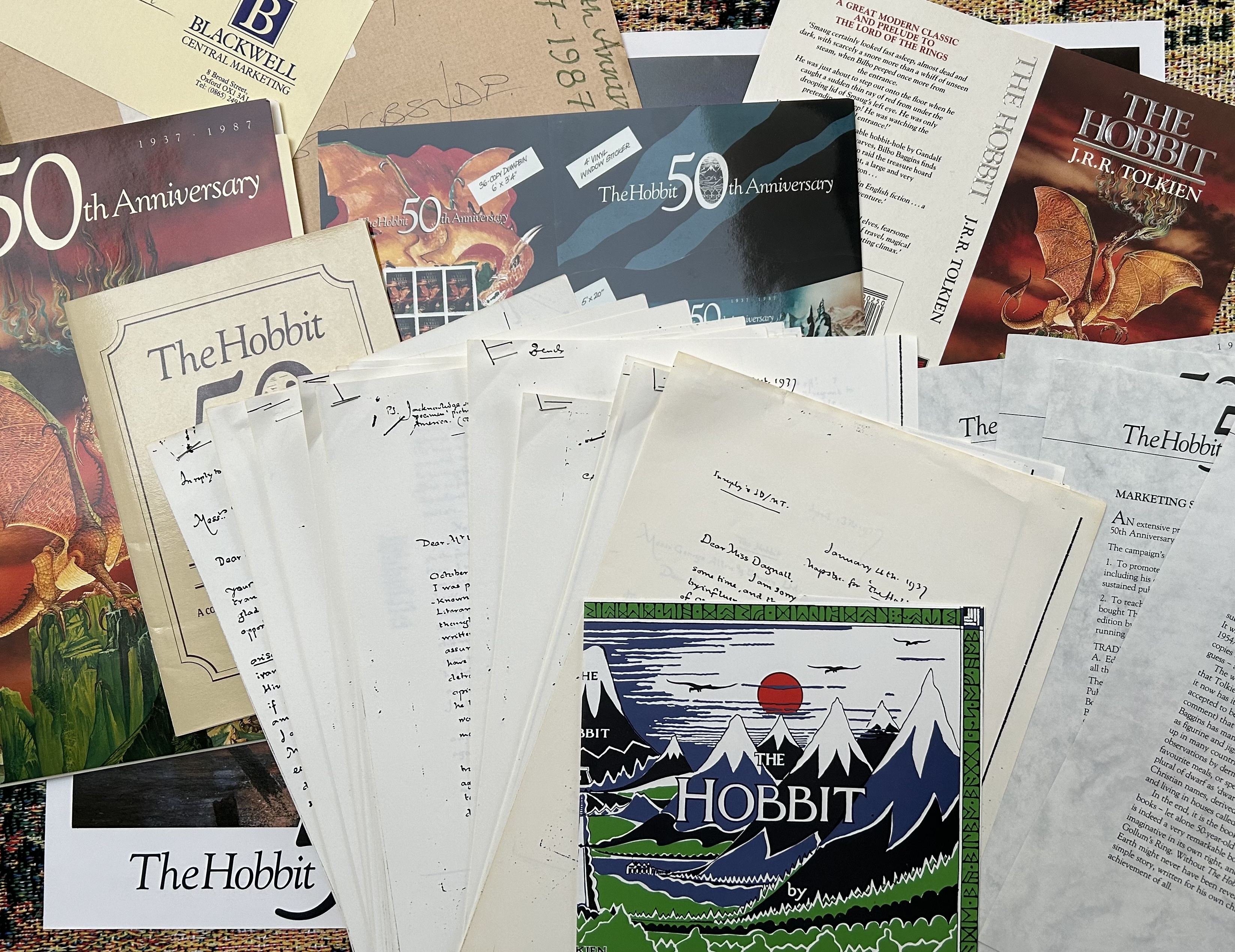
All of the contents of this particular publicity kit
31 of Carpenter's letters are now "green" in our Guide (meaning we have seen the original letter and are aware of its entire contents), with the addition of these 14. This cache of photocopies almost doubled the number of Carpenter's selected letters where we can now compare the original document directly to what has been published in the book, allowing a glimpse into the process that Humphrey Carpenter and Christopher Tolkien likely used when editing for publication.
There are three types of editorial changes that this comparison reveals:
- Removal of material (the published "...." marks in various letters; or, when the material is at the start or end of the letter, silently left off)
- Corrections for small, common mistakes like inserting missing words or punctuation, when this improves legibility
- Apparent mistakes in transcription, e.g. where words have been removed without any obvious reason
The first type are of course the most interesting, but I am holding off on even summarizing what those elided materials are while I talk with the Estate, out of an abundance of caution - I am not the first to have seen this "new" material, but some of it is not even summarized in Chronology so there may be some reason for privacy that I wish to respect. More soon, hopefully.
An interesting editorial decision was made in Letter 17. Halfway through the letter, Tolkien writes "All the same I am little perturbed." Carpenter, on the other hand, has changed this to "All the same I am a little perturbed." The addition of "a" might seem small, but it completely reverses the meaning of this sentence. Carpenter apparently thinks Tolkien forgot the wordthe handwriting is quite clear, this is not a case of difficult reading - but Tolkien has in other cases accidentally left words out when writing letters so this would not be the first time this sort of editorial assist has been needed.[1] , but the sentence parses correctly both ways. I truly wonder, now, which meaning Tolkien actually intended. It changes the tone of the entire next paragraph, if Carpenter was wrong. Notably, Letter 17 is also the one with the most editorial mistakes (four times as many as any other letter in this set), so it appears from afar that this letter was not carefully read when being transcribed originally and the "a" may have been inserted without noticing that Tolkien hadn't written it.
Some of the photocopies show some interesting comments from the publisher written on them as well. For example, in Letter 13, Tolkien has asked "can you tell me the name of the firm" in America that might be publishing The Hobbit, and someone else has drawn a line from that to the word "answered" they have written above. The same happens at the bottom of the same letter where Tolkien has asked if the date for publication of the English edition is approaching.
The Blackwell's Hoard
Differences are noted by type. For type #3 (apparent mistakes in Carpenter's transcription), I have written them as [Carpenter] > [Photocopy].
Carpenter's Letter #9 (J.R.R. Tolkien to Susan Dagnall, 4 January 1937)
- (in Chapter I) > (to Chapter I)
Carpenter's Letter #12 (J.R.R. Tolkien to Allen & Unwin Ltd., 13 April 1937)
- Also in this letter (not reproduced by Carpenter or mentioned by Scull and Hammond), Tolkien writes further about the dust jacket design, wondering if the lettering needs to be more clear and better placed, and wonders about the runic border placement and size. He asks if the submitted jacket "contains any hope", and says that he could redraw it on better paper in a day or two if needed.
Carpenter's Letter #13 (J.R.R. Tolkien to C.A. Furth, 13 May 1937)
- In unpublished material at the end of the letter he asks if the American publisher is going to want originals of artwork or photographs of them, and wonders if the English edition is going to be published soon.
Carpenter's Letter #14 (J.R.R. Tolkien to Allen & Unwin Ltd., 28 May 1937)
- In an unpublished section of this letter, Tolkien asks if Houghton Mifflin might publish the maps in their original colours, and with the runic map redrawn, and he notes that GA&U's "summer announcements" still say The Hobbit is coming out in June.
- indulging in exams or in 'frivolities'. > indulging either in exams or in 'frivolities'.
Carpenter's Letter #15 (J.R.R. Tolkien to C.A. Furth (Allen & Unwin), 31 August 1937)
- they cannot be used for that book. > they cannot be used for that book.
- The commentary on the dust jacket blurb is not included in this photocopy, just the letter itself
Letter from Stanley Unwin to J.R.R. Tolkien • 11 October 1937 (#1987)
Carpenter's Letter #17 (J.R.R. Tolkien to Stanley Unwin, 15 October 1937)
- All the same I am a little perturbed. > All the same I am little perturbed.
- material for treatment > material suitable for treatment
- much too much for Richard > much too much of Richard
- in any case, I could bring Mr Bliss > in any case, if I could bring Mr Bliss
Carpenter's Letter #18 (J.R.R. Tolkien to Stanley Unwin, 23 October 1937)
- The photocopy and Carpenters (revised edition) transcript match
Carpenter's Letter #19 (J.R.R. Tolkien to Stanley Unwin, 16 December 1937)
- Possible that a comma was changed to a semi-colon (photocopy quality prevents final determination) but otherwise the published letter matches.
Carpenter's Letter #22 (J.R.R. Tolkien to C.A. Furth, 4 February 1938)
- The photocopy and Carpenters (revised edition) transcript match (this letter has also been previously reproduced elsewhere)
Letter from Stanley Unwin to J.R.R. Tolkien • 11th February 1938 (#1988)
Carpenter's Letter #24 (J.R.R. Tolkien to Stanley Unwin, 18 February 1938)
- and for the moment the story > and at the moment the story
Letter from Stanley Unwin to J.R.R. Tolkien • 3rd May, 1938 (#1989)
Letter from Stanley Unwin to J.R.R. Tolkien • 1 June 1938 (#1991)
Carpenter's Letter #28 (J.R.R. Tolkien to Stanley Unwin, June 4th 1938)
- In an unpublished section of this letter, Tolkien shares his lengthy and entirely negative opinions about the Clark Hall translation of Beowulf.
- more than adventures; > more than their adventures;
Letter from Rütten & Loening Verlag, Potsdam to J.R.R. Tolkien • 22 July 1938 (#1981)
Carpenter's Letter #31 (J.R.R. Tolkien to C.A. Furth, 24 July 1938)
- It appears that Tolkien may have had a paragraph break that Carpenter ignored, but otherwise the published letter matches
Carpenter's Letter #29 (J.R.R. Tolkien to Stanley Unwin, 25 July 1938)
- At the end of this letter in an unpublished paragraph, Tolkien describes further the various edits that might be made to his proposed letter to the German publisher, and says at the end that it should be Unwin's decision what to send.
- appearing in print > appearing anywhere in print
Carpenter's Letter #30 (J.R.R. Tolkien to Rütten & Loening Verlag, 25 July 1938)
- In the initial paragraph, elided by Carpenter in all editions, Tolkien mentions that he understands why they don't like his proposed translator, but asks to be given an opportunity to comment and make suggestions before publication if they arrange their own translation.
As you can see from the above list, out of fourteen Carpenter letters now seen in manuscript form, only four (18, 19, 22, 31) are essentially the same - almost 70%Letter 18 is only six sentences long and Letter 22 is seven sentences - discounting those as near impossible to mis-transcribe brings the percentage up to well over 80%.[2] of these letters have corrections or additional material. This matches the experience I have seen with other Carpenter letters where comparison is possible (e.g. the Dick Plotz letters). It is amazing to me what a eye-opening experience it has been to see these few letters, even in photocopy form, when I thought there was nothing more to learn after Carpenter's publication of them. A fascinating benefit of doing this Guide to Tolkien's Letters project, and I have never been more happy to have paid significant money for a few photocopies.
Other material in this publicity kit
- Blackwell's mailing envelope with handwritten "The Hobbit 50th Anniversary 1937-1987" title
- Blackwell's "With compliments" slip with handwritten note
- Folder with Roger Garland illustration on front, Unwin Hyman paperback information on rear
- Unwin paperback wrapper sample
- John Howe poster
- Hardcover dustjacket sample
- Photo print of planned bookstore promotional displays and materials
- The Hobbit 50th Anniversary commemorative booklet, with Blackwell Bookshop logo
- Explanatory letter from Rayner Unwin, October 1986 ("signed" but this is a copy of the signed letter)
- Marketing strategy sheet, 2 sided
- Publishing strategy sheet
- New title and Point of Sale order form, 2 sided
- Tolkien backlist order form, 2 sided
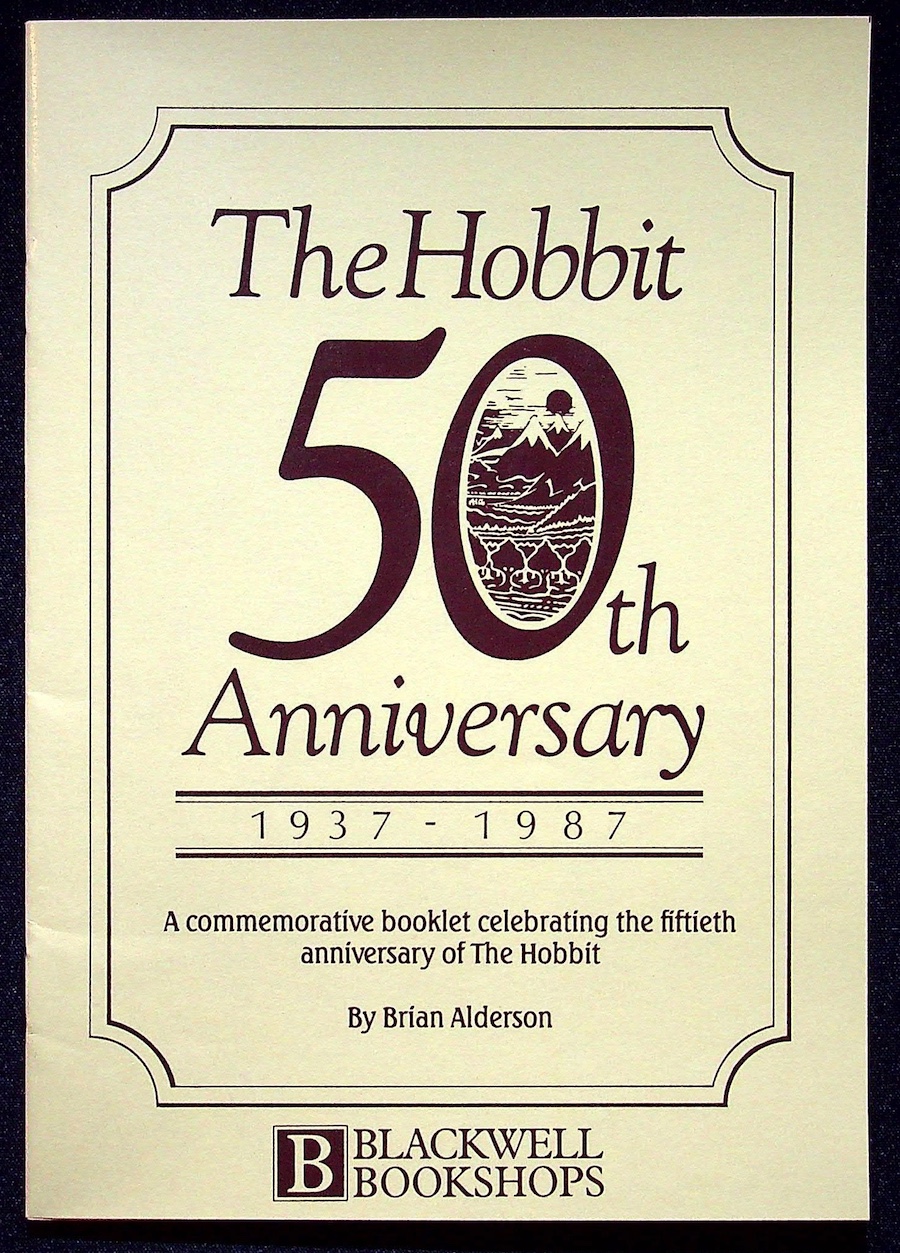
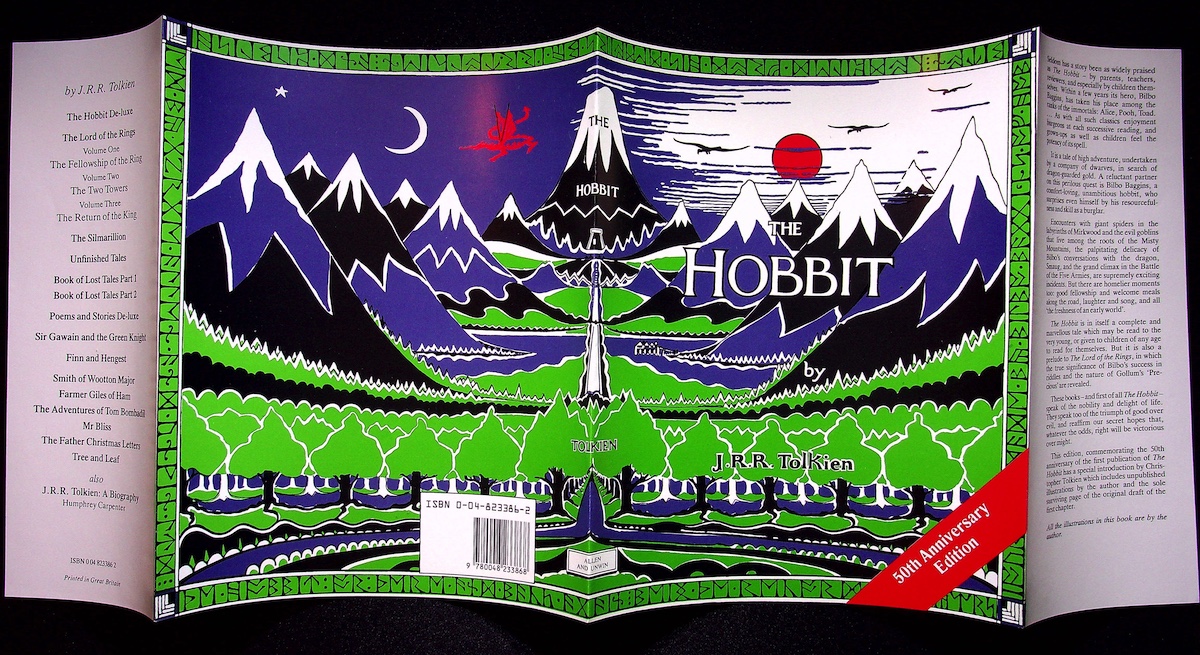
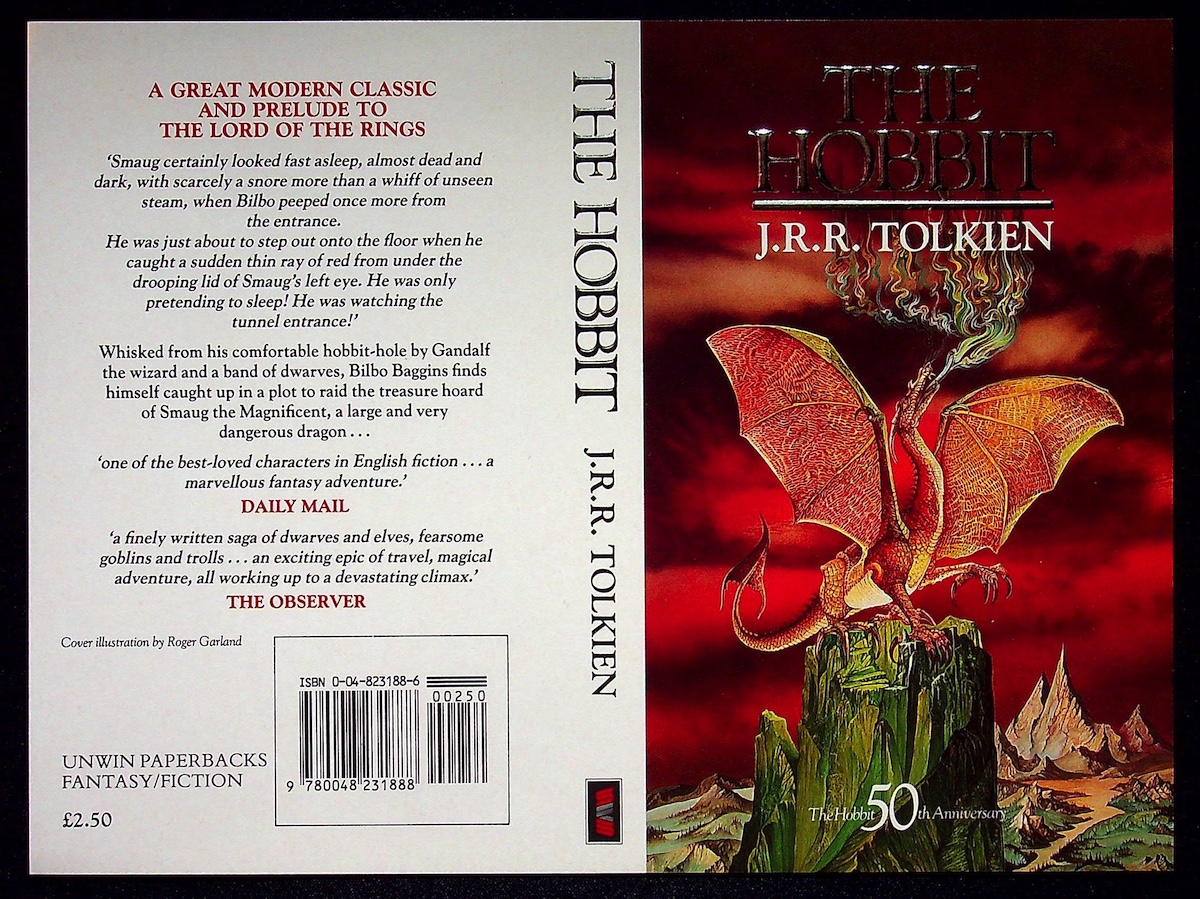
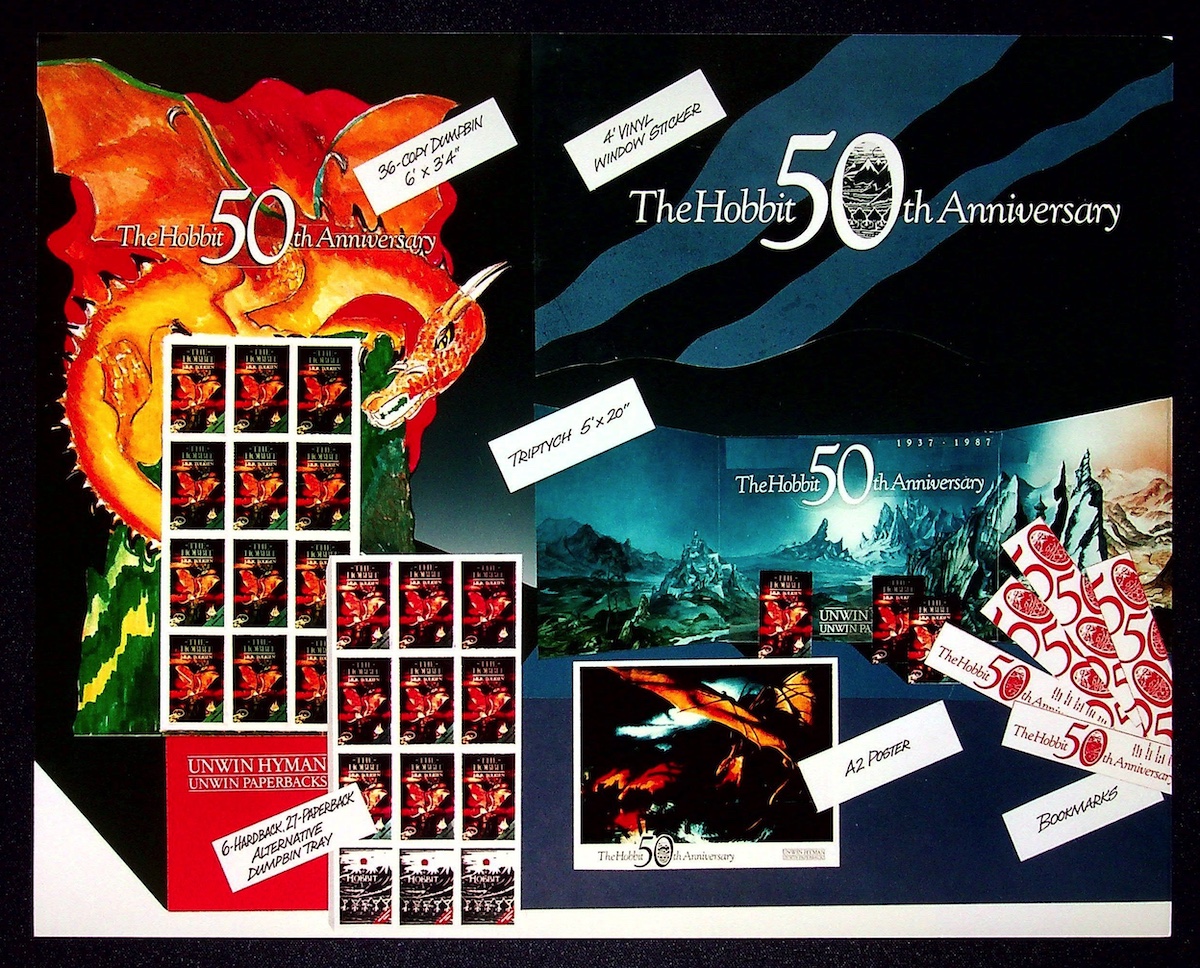
1 the handwriting is quite clear, this is not a case of difficult reading - but Tolkien has in other cases accidentally left words out when writing letters so this would not be the first time this sort of editorial assist has been needed. ↩
2 Letter 18 is only six sentences long and Letter 22 is seven sentences - discounting those as near impossible to mis-transcribe brings the percentage up to well over 80%. ↩















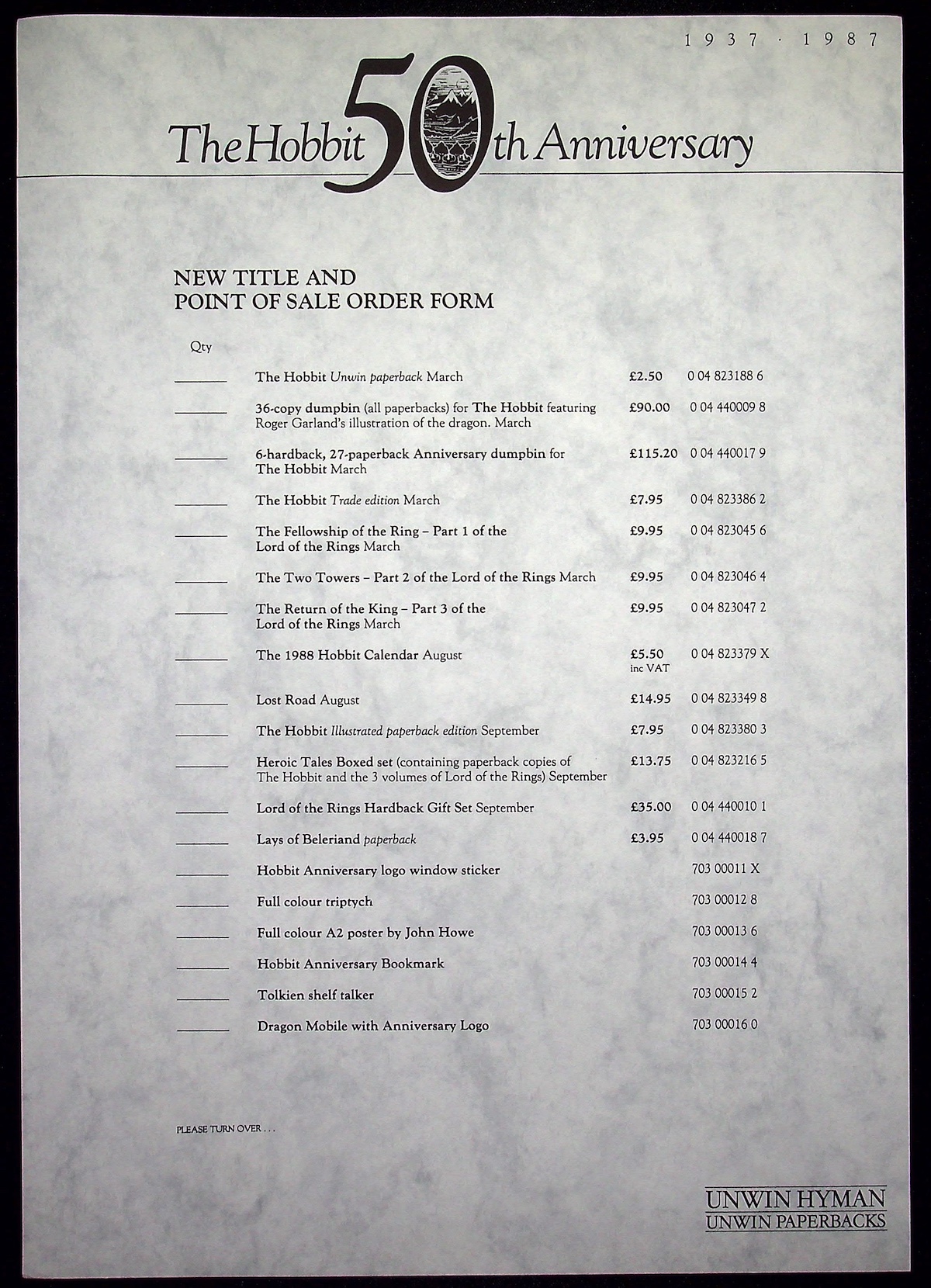
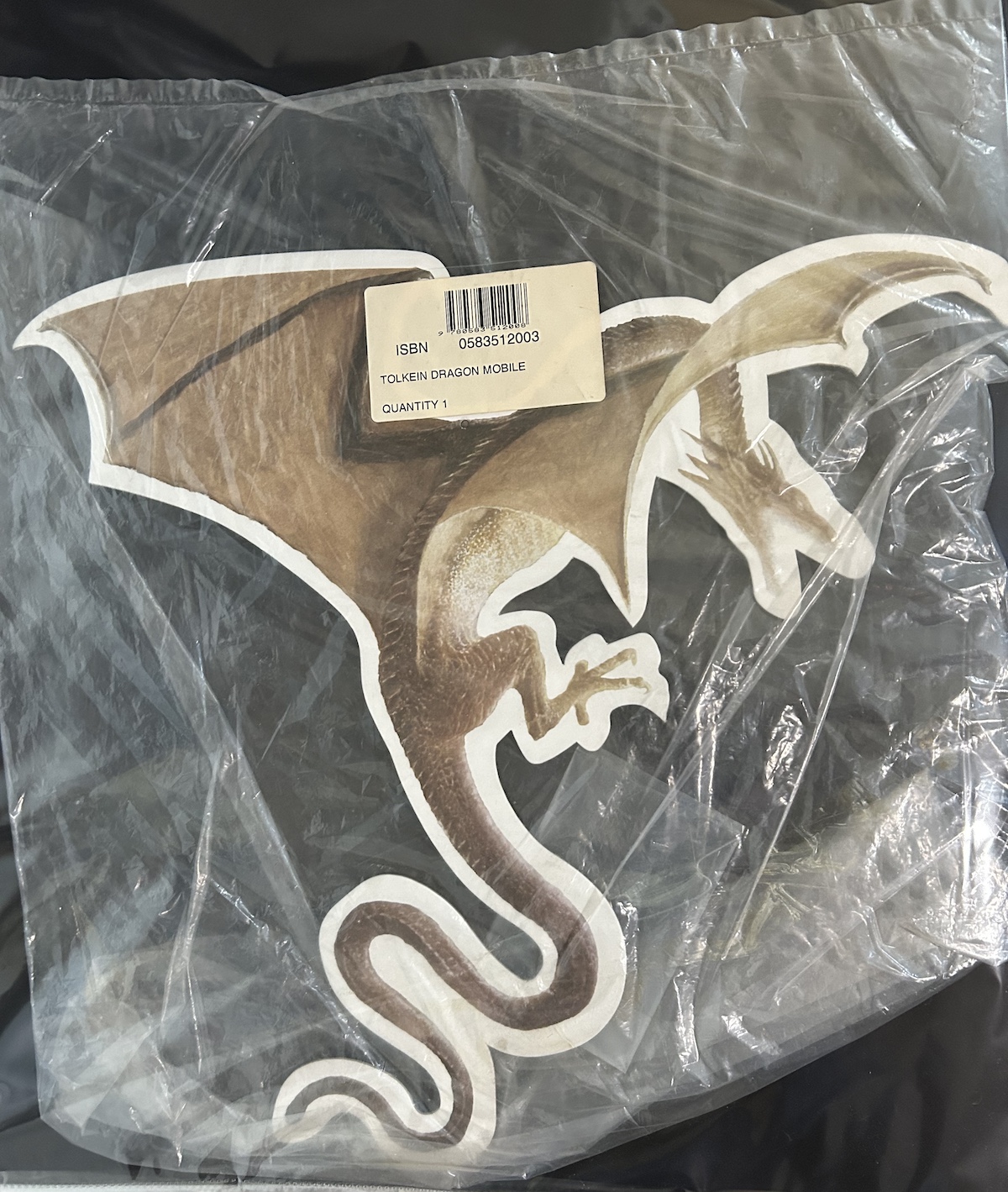



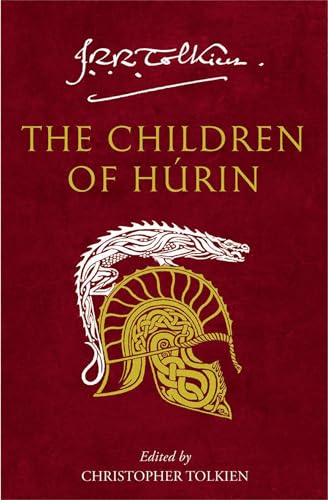
 4430
4430 2.07M
2.07M